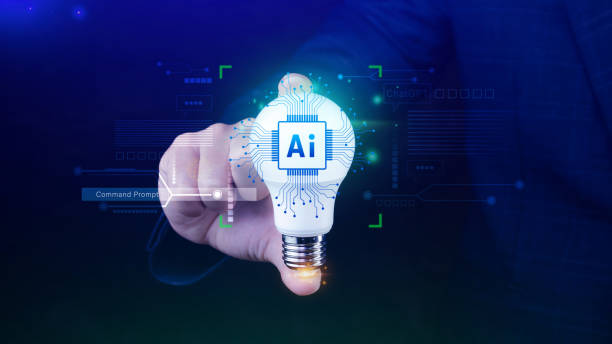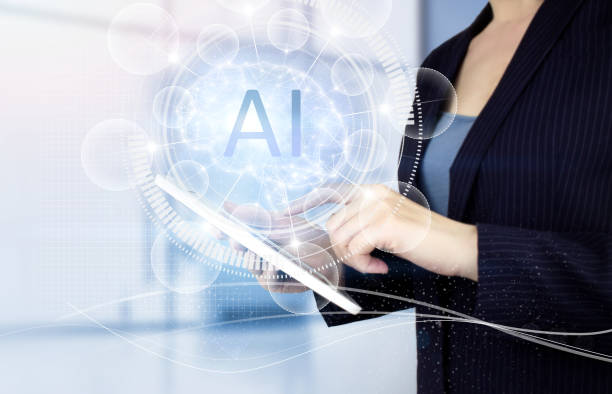What is Artificial Intelligence and What are its Applications?
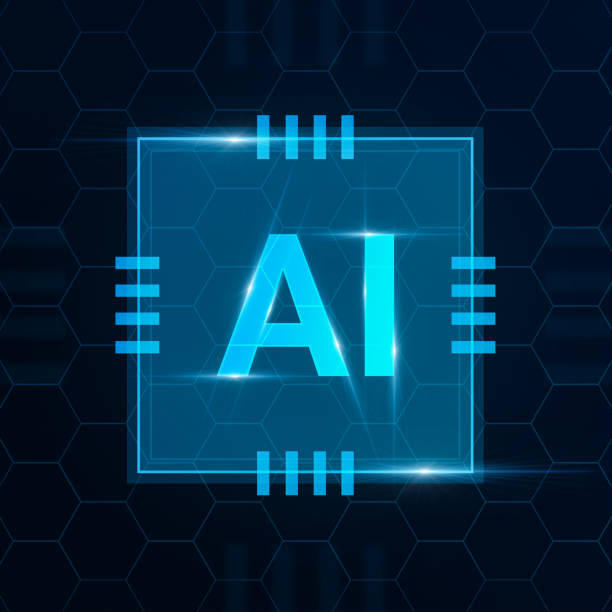
Artificial Intelligence (AI) is a branch of computer science dedicated to building machines capable of performing tasks that typically require human intelligence.
These tasks include learning, reasoning, problem-solving, natural language understanding, and pattern recognition.
#Artificial_Intelligence has made significant advancements in recent years and has increasingly permeated our daily lives.
For example, AI is used in virtual assistants like Siri and Alexa, recommender systems on Netflix and Amazon, and self-driving cars.
The applications of artificial intelligence are vast and impact almost all industries.
In healthcare, AI assists in disease diagnosis, drug development, and providing personalized care.
In the financial sector, it’s used for fraud detection, risk management, and offering investment advice.
In manufacturing, AI helps optimize processes, reduce costs, and improve product quality.
These are just a few examples of the countless applications of artificial intelligence.
In summary, artificial intelligence strives to create systems that can think and act like humans, but at a much faster speed and with higher accuracy.
This technology has the potential to fundamentally change how we live, work, and interact with the world around us.
Also, AI is transforming our lives.
Is your current e-commerce website design causing you to lose customers and sales?
Rasaweb is your solution with modern and user-friendly e-commerce website designs!
✅ Significant increase in conversion rates and sales
✅ Building strong branding and attracting customer trust
⚡ Get free e-commerce website design consultation from Rasaweb!
Types of Artificial Intelligence: Approaches and Classifications
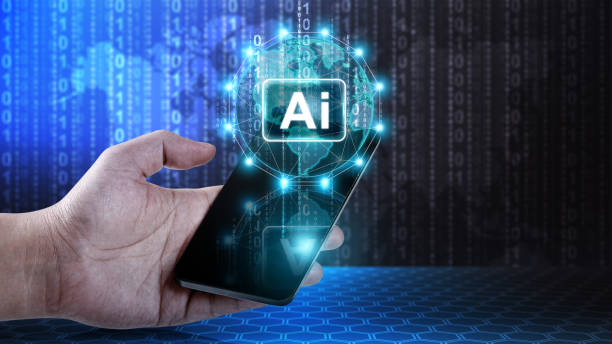
Artificial intelligence can be classified based on various criteria.
One of the most common classifications is based on the capabilities of AI.
Accordingly, AI can be broadly divided into two categories: Narrow AI and General AI.
Narrow AI, also known as specialized AI, is designed to perform a specific task and performs well in that particular field.
For example, a facial recognition system or a chess-playing system are examples of narrow AI.
In contrast, General AI, also known as strong AI, is capable of performing any task that a human can.
General AI is still in its early stages of development and has not yet been fully realized.
Another classification of AI is based on the approaches used in its development.
Some common approaches include Machine Learning, Deep Learning, Fuzzy Logic, and Expert Systems.
Each of these approaches has its own advantages and disadvantages and is used to solve different problems.
Machine learning allows machines to learn from data and improve their performance without being explicitly programmed.
Deep learning is a subset of machine learning that uses artificial neural networks with multiple layers to learn complex patterns in data.
In general, choosing the appropriate approach for AI development depends on the nature of the problem and the available data.
Machine Learning and Deep Learning: The Foundations of Artificial Intelligence
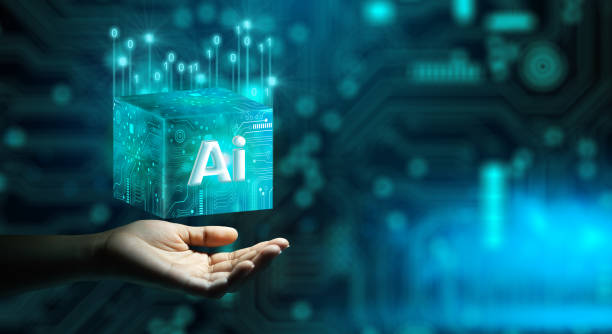
Machine Learning (ML) and Deep Learning (DL) are two fundamental concepts in the field of artificial intelligence.
Machine learning allows algorithms to learn from data and improve their performance without explicit programming.
In other words, instead of instructing machines how to perform a task, we provide them with data and let them discover patterns and relationships within the data themselves.
Deep learning is a subset of machine learning that utilizes artificial neural networks with multiple layers (deep networks) to learn complex patterns in data.
Deep neural networks are capable of processing vast amounts of data and can extract intricate features from data that are challenging for traditional machine learning algorithms.
Machine learning and deep learning are used in many AI applications, including image recognition, natural language processing, and recommender systems.
For example, a deep learning-based image recognition system can learn to detect various objects with high accuracy by being trained on millions of images.
In summary, machine learning and deep learning are powerful tools that enable machines to learn from data and perform tasks that were previously only possible for humans.
| Machine Learning Algorithm | Applications |
|---|---|
| Linear Regression | Housing Price Prediction |
| Support Vector Machine | Spam Detection |
| Decision Tree | Loan Granting Decisions |
| Neural Networks | Image Recognition |
Natural Language Processing (NLP): Understanding and Generating Language by Machines

Natural Language Processing (NLP) is a branch of artificial intelligence that enables machines to understand and generate human language.
NLP encompasses a set of techniques and algorithms that allow machines to analyze texts, extract their meaning, and produce new texts.
NLP applications are very broad and include machine translation, text summarization, sentiment analysis, and question answering.
For example, Google Translate uses NLP to translate texts from one language to another.
One of the main challenges in NLP is the ambiguity inherent in natural language.
Words and phrases can have multiple meanings, and understanding their correct meaning depends on context and background knowledge.
To address this, NLP employs various techniques such as language modeling, syntactic parsing, and semantics.
Language modeling helps machines predict the probability of a sequence of words occurring.
Syntactic parsing helps machines understand the grammatical structure of a sentence.
Semantics helps machines grasp the meaning of words and phrases.
Overall, NLP strives to build a bridge between human language and machine language, enabling machines to communicate more naturally with humans.
Currently, ChatGPT is one of the successful examples of this communication.
Still don’t have a corporate website and are missing out on online opportunities? With professional corporate website design by Rasaweb,
✅ Double your business credibility
✅ Attract new customers
⚡ Free consultation for your corporate website!
Computer Vision: The Ability of Machines to See and Interpret Images

Computer Vision (CV) is a branch of artificial intelligence that enables machines to see and interpret images and videos.
CV comprises a set of techniques and algorithms that allow machines to detect objects in images, understand scenes, and track movements.
CV applications are very extensive and include self-driving cars, video surveillance systems, and disease diagnosis.
For example, self-driving cars use CV to recognize traffic signs, pedestrians, and other vehicles.
One of the main challenges in CV is the high variability of images and videos.
Images can be captured from different angles, under varying lighting conditions, and with different qualities.
To address this problem, CV uses various techniques such as deep learning, image processing, and pattern recognition.
Deep learning helps machines learn complex patterns in images.
Image processing assists machines in enhancing images and extracting important features.
Pattern recognition helps machines identify objects in images.
In summary, CV strives to give machines the sense of sight, enabling them to understand the world around them.
Advancements in this field are pushing the boundaries of technology.
Robotics and Artificial Intelligence: Collaboration for Creating Intelligent Machines
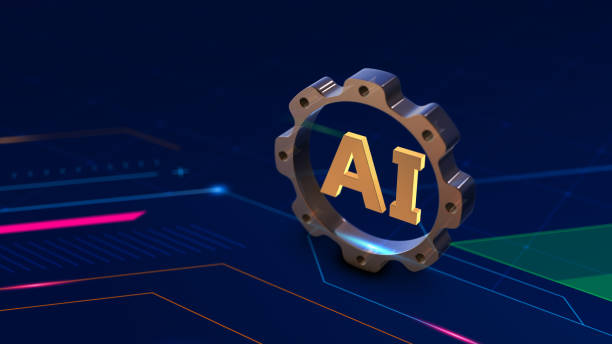
Robotics and Artificial Intelligence are two related fields that, in collaboration, create intelligent machines capable of performing complex tasks in the real world.
Robotics deals with the design, construction, operation, and application of robots.
Artificial intelligence enables machines to think, learn, and make decisions.
When these two fields are combined, robots become capable of performing tasks that were previously only possible for humans.
These machines have a better understanding thanks to #Artificial_Intelligence.
For example, an industrial robot equipped with AI can automatically perform various tasks on a production line, such as picking up parts, assembling them, and inspecting quality.
A home robot equipped with AI can clean the house, care for children, and assist the elderly.
A search and rescue robot equipped with AI can search for missing people in dangerous areas.
The main challenges in robotics and AI include developing robust AI algorithms, building resilient and reliable robots, and ensuring robot safety.
With recent advancements in AI and robotics, it is expected that in the near future, we will witness an increasing adoption of intelligent robots in our daily lives.
Artificial intelligence alongside robotics can change the world.
Advantages and Disadvantages of Artificial Intelligence: Opportunities and Challenges

Artificial Intelligence (AI), like any other technology, has its own advantages and disadvantages.
The benefits of AI are numerous and include increased productivity, reduced costs, improved quality, and the provision of new services.
AI can help automate repetitive and tedious tasks, allowing humans to focus on more creative and strategic endeavors.
Furthermore, AI can assist in disease diagnosis, drug development, and providing personalized medical care.
However, artificial intelligence also has drawbacks.
One of the primary disadvantages is the potential for job displacement.
AI can automate many tasks currently performed by humans, which could lead to unemployment.
Other disadvantages of AI include algorithmic bias, privacy concerns, and security risks.
AI algorithms can be discriminatory if trained on biased data.
AI can be used to collect and analyze individuals’ personal information, which can lead to privacy breaches.
AI systems can be attacked by hackers and used for malicious purposes.
In general, artificial intelligence is a powerful technology with the potential to fundamentally change our lives.
However, it is important to be aware of its advantages and disadvantages and strive to use it responsibly. Proper use of AI can be a game-changer.
| Advantages | Disadvantages |
|---|---|
| Increased Productivity | Job Displacement |
| Reduced Costs | Algorithmic Bias |
| Improved Quality | Privacy Concerns |
| New Service Offerings | Security Risks |
The Future of Artificial Intelligence: Predictions and Outlooks
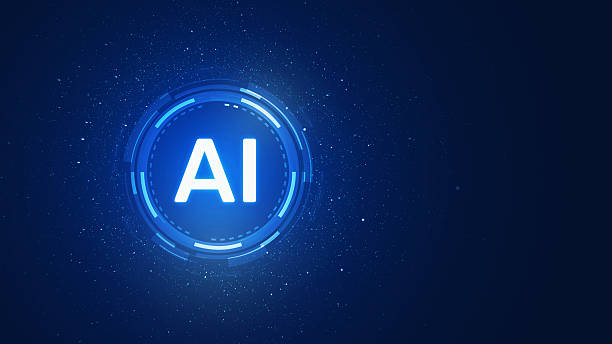
The future of artificial intelligence is bright and full of potential.
It is expected that in the coming years, AI will increasingly permeate our daily lives and fundamentally change the way we live, work, and interact with the world around us.
Some predictions about the future of AI include:
- Widespread use of AI in various industries
- Development of Artificial General Intelligence (AGI)
- Creation of intelligent robots capable of performing complex tasks
- Improvement in Natural Language Processing (NLP)
- Advancement in Computer Vision (CV)
However, the future of artificial intelligence also comes with challenges.
One of the main challenges is ensuring that AI is developed responsibly and ethically.
We must strive to prevent algorithmic bias, protect individuals’ privacy, and mitigate security risks.
Another challenge is preparing for the economic and social changes brought about by AI.
We need to help workers acquire new skills and prepare for new jobs created by artificial intelligence.
Overall, the future of AI depends on the choices we make today.
With careful planning and collaboration among governments, businesses, and civil society, we can harness the benefits of AI and prevent its drawbacks.
Are you tired of your e-commerce website not generating as much revenue as it could? Rasaweb, specializing in professional e-commerce website design, solves this problem permanently!
✅ Increase sales rate and revenue
✅ High loading speed and exceptional user experience
⚡ Get a free e-commerce website design consultation
Social and Economic Impacts of Artificial Intelligence

Artificial Intelligence will have profound impacts on society and the economy.
This technology can increase productivity, reduce costs, and create new opportunities, but it can also lead to job loss, increased inequality, and privacy concerns.
In the economic sphere, AI can increase productivity and reduce costs by automating tasks.
This can lead to increased corporate profitability, lower prices for goods and services, and boosted economic growth.
However, AI can also lead to job displacement, as many tasks currently performed by humans can be automated by machines.
This could result in increased unemployment, greater inequality, and social discontent.
The impacts of artificial intelligence on the #economy are vast.
In the social sphere, AI can lead to improved healthcare services, increased access to education, and enhanced quality of life.
However, AI can also lead to privacy concerns, as individuals’ personal information can be collected and analyzed by AI systems.
AI can also be used for malicious purposes, such as creating autonomous weapons.
Overall, the social and economic impacts of artificial intelligence are complex and depend on the policies and decisions we make today.
We must strive to leverage the benefits of AI and mitigate its drawbacks.
How to Learn Artificial Intelligence: Paths and Resources

Learning Artificial Intelligence can be an exciting and rewarding journey.
Given the increasing demand for AI specialists, learning this technology can provide you with numerous career opportunities.
There are various paths to learning AI, including online courses, university courses, and self-study.
Each of these paths has its own advantages and disadvantages, and choosing the right path depends on your goals, interests, and knowledge level.
Learning artificial intelligence is a necessity today.
If you’re looking for a fast and affordable path, online courses can be a suitable option.
Many reputable universities and educational institutions offer online AI courses that you can access anytime, anywhere.
If you’re seeking comprehensive and in-depth training, university courses can be a good choice.
University courses typically include theoretical and practical lessons and help you acquire the necessary knowledge and skills to become an AI specialist.
If you are interested in independent learning, you can use online resources and books for self-study.
Many online resources are available in the field of artificial intelligence, including blogs, tutorials, and open-source projects.
By utilizing these resources, you can gradually enhance your knowledge and skills in artificial intelligence.
Learning AI requires patience and perseverance, but with effort and practice, you can become an AI expert.
Frequently Asked Questions
| Question | Answer |
|---|---|
| What is Artificial Intelligence? | It is the simulation of human intelligence in machines programmed to think like humans and mimic their actions. |
| What are the main branches of Artificial Intelligence? | They include Machine Learning, Deep Learning, Natural Language Processing, Computer Vision, and Robotics. |
| What is Machine Learning (ML)? | It is a branch of Artificial Intelligence that focuses on enabling systems to learn from data and identify patterns without explicit programming. |
| Mention examples of Artificial Intelligence applications in our daily lives. | Voice assistants (such as Siri and Alexa), recommendation systems in Netflix and Amazon, self-driving cars, and facial recognition programs. |
| What is Deep Learning (DL)? | It is a subset of Machine Learning that uses artificial neural networks with multiple layers (deep) to process large amounts of data. |
| What is Natural Language Processing (NLP)? | It is a branch of Artificial Intelligence that focuses on enabling computers to understand, interpret, and generate human language. |
| What are some ethical concerns related to Artificial Intelligence? | They include data bias, privacy, job loss, and accountability in case of errors. |
| What are the main benefits of Artificial Intelligence? | Increased efficiency, improved decision-making, automation of repetitive tasks, and discovery of complex patterns in data. |
| How is Artificial Intelligence used in healthcare? | In disease diagnosis, drug discovery, medical image analysis, and personalized patient care. |
| How do you see the future of Artificial Intelligence? | It is expected to continue developing rapidly, affecting all aspects of human life, from industry to education and entertainment. |
And other advertising services from Rasaweb Advertising Agency:
- Smart Custom Software: A combination of creativity and technology to analyze customer behavior by optimizing key pages.
- Smart Marketing Automation: A dedicated service for growth in sales based on the use of real data.
- Smart Customer Journey Map: A combination of creativity and technology to increase sales through custom programming.
- Smart Digital Advertising: A new service to increase website traffic through the use of real data.
- Smart Advertorial: A dedicated service for improving SEO ranking based on customizing user experience.
And over hundreds of other services in the field of internet advertising, advertising consultation, and organizational solutions.
Internet Advertising | Advertising Strategy | Advertorial
Resources
Future AI Trends on Digiato Comprehensive Guide to AI on Zoomit AI Applications on IRNA AI Challenges and Ethics on ISNA
? Are you ready for your business to be seen in the online world? Rasaweb Afarin Digital Marketing Agency, with years of experience and expertise in the digital field, is by your side to turn your dreams into reality. By providing innovative and creative solutions, including fast and optimized website design, professional SEO, social media management, and targeted advertising, we help you attract more audiences and experience sustainable growth. With Rasaweb Afarin, the future of your business begins today.
📍 Tehran, Mirdamad Street, next to Bank Markazi, Southern Kazeroun Alley, Ramin Alley, No. 6

